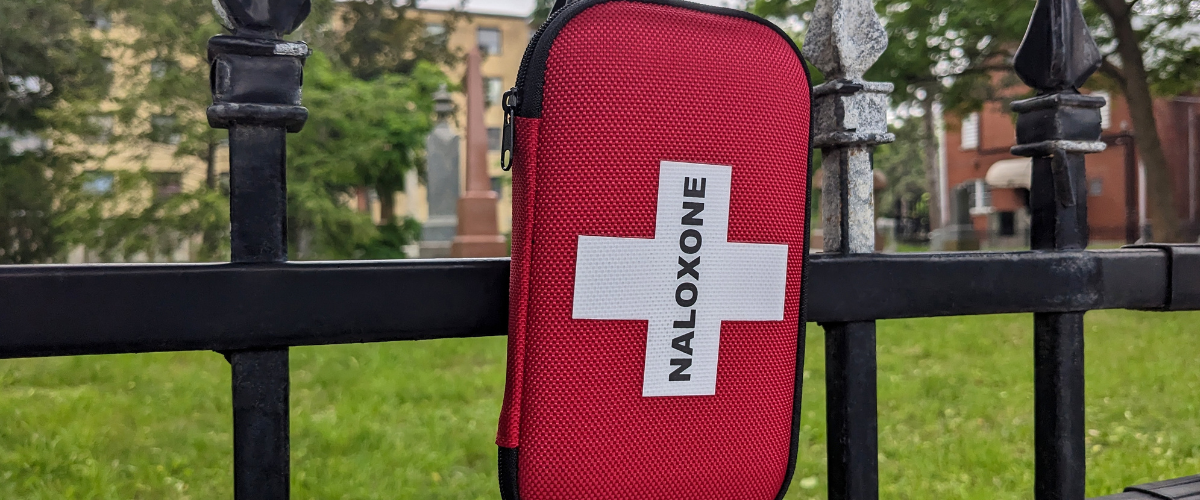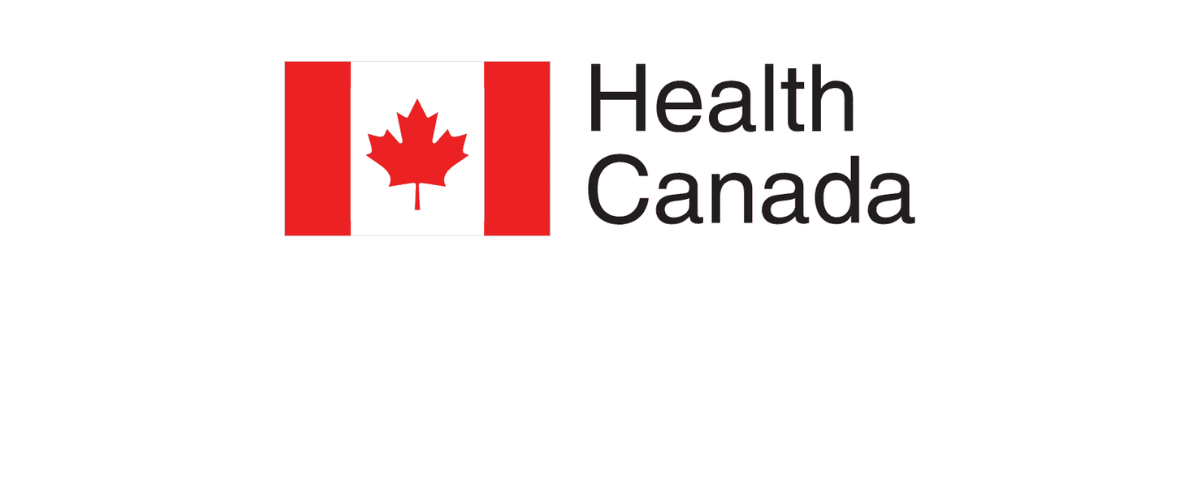MAP’s Toronto Drug Checking Service was featured in The Canadian Press’ piece on Canada’s recently expanded drug strategy on the overdose crisis. The project has received $2 million over two years from Health Canada as part of this strategy.
Month: October 2023
Research finds no consistent correlations between police spending and municipal crime rates
No consistent correlations were found between increased police spending and municipal crime rates in a longitudinal study by researchers at the University of Toronto and the Upstream Lab shared in the Advance Access issue of Canadian Public Policy.
“Our analysis found that police services are a top budget priority in most municipalities, with up to 26 percent of total expenditures allocated to police,” wrote Mélanie Seabrook, Researcher at Upstream Lab based at MAP Centre for Urban Health Solutions, St. Michael’s Hospital, with co-authors. However, the findings revealed net increases in per capita spending are not associated with larger reductions in crime rates.
The authors examined budgets of 20 urban municipalities in Canada: Toronto, Montreal, Peel Region, Calgary, York Region, Edmonton, Ottawa, Winnipeg, Vancouver, Waterloo Region, Surrey, Quebec City, Hamilton, Halifax, Laval, London, Gatineau, Saskatoon, Burnaby, and Longueuil.
The study looked at police funding and how it varies across Canadian municipalities over a long period of time. The data from 2010 to 2020 showed wide differences in spending. For example, Vancouver spent more than double per capita on policing in 2019 than Quebec City, highlighting the complexity of the interactions between crime rates and police funding.
Other studies have also had mixed results regarding the relationship between police funding and crime. A 2014 study found no clear relationship between crime rates and per capita police expenditures in Canadian provinces, and a 2015 study of 50 Canadian municipalities found that higher spending on police was associated with higher rates of violent crime, but the direction of the relationship was not established.
Research on police funding is limited in Canada, partly due to the lack of publicly available data on police spending. The study calls for improved publishing of police expenditure data, and for future research to examine whether funding decisions may be based on past crime rates and explore whether investments in police impact future crime rates.
“Although we do not make specific policy recommendations regarding police budgets, our findings raise questions about the reasoning for such vast differences in police funding across the country despite overall downward crime rates,” the authors concluded, who include Upstream Lab Founder & Director Dr. Andrew Pinto and MAP Scientist Dr. Nav Persaud.
“Police Funding and Crime Rates in 20 of Canada’s Largest Municipalities: A Longitudinal Study” was published in Canadian Public Policy Advance Access on October 17, 2023. The official publication will appear in the December issue.
Health Canada announces more than $21 million to support community-based organization who are helping address harms related to substance use
Canada is in the midst of one of the most serious public health crises in our country’s history – the toxic and illegal drug and overdose crisis. No community has been left untouched. That’s why we are leveraging all the tools at our disposal to work towards an end to this national public health crisis—including prevention, harm reduction, treatment, recovery and enforcement.
Today, the Honourable Ya’ara Saks, Minister of Mental Health and Addictions and Associate Minister of Health, announced more than $21 million in federal funding for 52 projects through Health Canada’s Substance Use and Addictions Program (SUAP). With this funding, organizations will be able to increase access to much needed services for those who use drugs and help improve health outcomes for people who are at risk of experiencing substance-related harms.
Investing in programs like SUAP is a key part of the renewed Canadian Drugs and Substances Strategy also released today. The renewed CDSS builds on the work, engagement and consultation since it was originally launched in 2016, including that of the Expert Task Force on Substance Use. The Government of Canada is using an integrated approach to address the overdose crisis and other substance use harms in Canada. Supporting community-based organizations across the country helps reduce stigma and meet the unique needs of the people in their communities where they are at, getting them the services and supports they need, when they need it.
The Government of Canada will continue to work with all levels of government, public health and public safety partners, social sectors, Indigenous communities, stakeholders, people with lived and living experience, and community organizations across the country to support a full range of services and improve health outcomes for all Canadians, save lives and work towards an end to this national public health crisis.
Quotes
“We recognize the tragic toll the overdose crisis and other substance use related harms are taking on families, friends and communities across Canada. Our comprehensive and compassionate approach is about reducing harms, and saving lives. We are supporting community organizations who have deep roots in their communities, have the trust of their clients and have the first-hand knowledge needed to make a real difference in people’s lives. We are using every tool at our disposal to end this crisis and build a safer, healthier and more caring future for all Canadians.“
The Honourable Ya’ara Saks
Minister of Mental Health and Addictions and Associate Minister of Health
“As a harm reduction nurse, I understand the incredible complexities of this devastating crisis. There are multifaceted ways to approach it. Compassionate, lifesaving interventions are not up for debate. I have seen firsthand the lifesaving impact of community-based initiatives and we must listen to the perspective of those with lived and living experience because they know best what is needed.”
Dr. Leigh Chapman
Chief Nursing Officer of Canada
“Over the past four years, my team has observed firsthand the positive and quantifiable impact drug checking services have on responding to Canada’s toxic drug supply crisis. Drug checking can lead to behaviour change that reduces the risk of overdose, generates data that informs clinicians and care, and empowers people who use drugs to advocate for themselves and help develop solutions that impact them. This support from Health Canada’s Substance Use and Addictions Program for Toronto’s Drug Checking Service and emerging drug checking technologies, like DoseCheck, will improve access to these potentially life-saving services, promote provincial monitoring of the unregulated drug supply, and, most importantly, contribute to bettering the lives of Ontarians who use drugs.”
Karen McDonald
Lead, Toronto’s Drug Checking Service
Director, Program Development and Operations, St. Michael’s Hospital, a site of Unity Health Toronto
“As one of the co-chairs of the expert advisory committee on substance use and mental health, I am pleased to see the reflection of the committees important work in the new Canadian Drug and Substance Strategy. Today marks another positive step forward in supporting substance use health. Ensuring a public health approach by including harm reduction as a formal aspect of community based services is absolutely going to make a difference for the health, safety and wellness of all. The renewed model for the Canadian Drugs and Substances Strategy conveys a vision of wholeness, a commitment to the continuity of life for all, and puts forth a good challenge for good change. I look forward to seeing how this strategy translates for equity seeking populations.”
Carol Hopkins
Co-chair of the Expert Task Force on Substance Use
“People are dying, people are suffering and we need to do more to promote substance use health. The renewed CDSS aims to decrease overdose deaths and ensure fairness in access to a full spectrum of services, treatment and harm reduction interventions. I was proud to co-chair the Expert Task Force on Substance Use which called for greater fairness in substance use health and happy that the Government has made that a central part of the new CDSS. Fairness is an important Canadian value.”
Dr. Kwame McKenzie
Co-chair of the Expert Task Force on Substance Use
“As co-chair on the Health Canada Expert Task Force on Substance Use we heard of the devastating impact of the toxic illegal drug crisis in communities across Canada. It was clear that what is needed is a comprehensive strategy that is evidence based and health focused. There is no one solution to this reverse this crisis. Building a range of health services that are available on demand will be the foundation for addressing the harms and supporting persons who use drugs, families and communities that are so impacted.”
Mike Serr
Co-chair of the Expert Task Force on Substance Use
“This is the kind of science that saves lives. Renewing the Canadian Drugs and Substances Strategy is an important step in unifying the field and coordinating a response to increasingly complex and tragic crises. An evidence-based strategy can drive collaboration across sectors to find solutions that are impactful and comprehensive.”
Dr. Alexander Caudarella
CEO of the Canadian Centre on Substance Use and Addiction (CCSA)
Quick facts
- Since 2017, over $500 million has been committed through Health Canada’s Substance Use and Addiction Program for more than 380 projects.
- Through SUAP, the Government of Canada provides funding to not-for-profit organizations, other levels of government, Indigenous communities, academia, and other groups for projects aiming to minimize substance use harms and improve health outcomes for Canadians. These community-led programs and projects leverage the expertise of people with lived and living experience with substance use, and/or are able to reach priority populations in Canada, such as low-income and low-education populations.
- Through new investments announced in Budget 2023, the Government of Canada is also proposing over $359 million, over five years, to support a renewed Canadian Drugs and Substances Strategy, which will continue to guide our work to protect the health and safety of Canadians. The 2023 call for proposals stems from new investments in Budget 2023 that provided $144 million to the Substance Use and Addictions Program.
- The Canadian Drugs and Substances Strategy (CDSS) is led by Health Canada and includes 15 federal departments and agencies. It covers a broad range of legal and illegal substances, including cannabis, alcohol, opioids and other substances that may result in harms. For more information on the approach and the foundational elements visit: canada.ca/drug-strategy.
- Addiction is a treatable medical condition, not a choice—yet many people affected by addiction face stigma and feel shame. The language we use has a direct and deep impact on the people around us.
New ‘Healthbox’ machine dispensing drug supplies, menstrual hygiene products, warm socks and more outside Merivale Road health centre
Dr. Sean Rourke spoke with the Ottawa Citizen about the launch of Ontario’s first Healthbox, a machine which dispenses harm reduction supplies amongst other necessities. It will be placed at the Carlington Community Health Centre.
Winter’s coming. Why Toronto needs to do more to help its homeless residents
MAP’s report on cold-related injury amongst those experiencing homelessness was referenced in the Toronto Star‘s coverage on Toronto’s Winter Services Plan.
“Four warming centres with 170 spaces will open when the temperature dips below -5C. That’s an improvement from last year when the centres weren’t available unless the temperature fell below -15C. It suggests the city is paying heed to the medical evidence — since Toronto’s MAP Centre for Urban Health Solutions found that 72 per cent of hypothermia cases occur when the temperature is above -15C.”
Opioid overdoses among homeless people rose dramatically: Ontario study
A growing proportion of people experiencing homelessness are dying from opioid overdoses, according to a new study led by Drs. Tara Gomes & Stephen Hwang. Dr. Hwang recently spoke to The Canadian Press about their findings.
Ford Government looks to launch a new registry to improve provincial efforts to reduce work related diseases
The Queen’s Park Briefing looks at the Ontario government’s plans to have an occupational exposure registry in place by 2025 to track workers’ exposure to disease-causing elements at work. This follows a MAP report by Dr. Linn Holness and Janet Brown on the current occupational disease landscape in the province.
Increasing Syphilis Rates Are a ‘Health Emergency’ for Canada
Dr. Sean Rourke spoke with Medscape News about the concerning rise in syphilis cases in Canada, and ways in which we can reduce the spread. Since 2017, the rate of infectious syphilis increased by 166% overall nationwide, according to the Public Health Agency of Canada (PHAC).
Ontario Strengthening Occupational Illness Protections
News release from the Ontario Labour, Immigration, Training and Skills Development Newsroom
The Ontario government is protecting and supporting workers by committing to create Canada’s first-ever Occupational Exposure Registry to track harmful exposure levels, help diagnose workplace diseases faster, improve worker compensation, and reduce costs to the healthcare system. The registry will help address many of the 41 recommendations resulting from the province’s first-ever review of the occupational illness landscape, released in a report today.
“While Ontario has one of the strongest health and safety records of any jurisdiction anywhere, too many workers are falling through the cracks when it comes to occupational illness,” said David Piccini, Minister of Labour, Immigration, Training and Skills Development. “Under the leadership of Premier Ford, our government will leave no stone unturned to ensure we have the best science and data needed to protect workers and make room for everyone’s voice at the table as we build a stronger system that works for everyone.”
Many workplace illnesses currently go undiagnosed or unreported because of the delay between exposure and symptoms, making it difficult to identify occupational disease risks and for workers to get financial support when they fall ill. The new registry would include comprehensive exposure records, identify at-risk workers, help with earlier diagnoses, and potentially contribute to expanding the list of presumptive illnesses in Ontario to improve worker compensation.
“Through our government’s Your Health plan, we are building a healthcare system that better provides Ontarians with the right care, in the right place,” said Sylvia Jones, Deputy Premier and Minister of Health. “With this innovative, first-of-its-kind Occupational Exposure Registry, our government is making it easier for workers across the province to connect to the care and support they need, when they need it.”
In addition, Ontario is creating an Occupational Illness Leadership Table made up of industry experts and worker advocates to guide the implementation of the report’s recommendations. The table will include some of the province’s foremost medical voices along with representatives from workplace health and safety groups to ensure the province keeps pace with advancements in medical science and technology and delivers for workers.
To build the Occupational Exposure Registry, which is expected in 2025, the Ministry of Labour, Immigration, Training and Skills Development is working with the Occupational Cancer Research Centre (OCRC) to collect and analyze data from existing Ministry industrial hygiene records. The Ministry and OCRC are also working with healthcare providers and industry associations to gather new data and catalogue past and current occupational exposures across Ontario’s hundreds of thousands of workplaces.
“The Ontario Federation of Labour (OFL) has long advocated for greatly increased recognition of occupational diseases by Ontario’s workers’ compensation system,” said Patty Coates, OFL President. “A government commissioned study by Dr. Paul Demers recently found that less than 10 per cent of Ontarians with occupational cancers ever get compensated. The OFL welcomes the government proposal to establish an occupational disease registry as a first step towards moving on other key recommendations in the Demers report, such as increasing the number of cancers recognized for workers’ compensation.”
The Occupational Disease Landscape Review report was authored by Dr. Linn Holness and Janet Brown of the MAP Centre for Urban Health Solutions at St. Michael’s Hospital in Toronto, a site of Unity Health Toronto, and an internationally recognized research organization. The 58-page report includes recommendations on workplace prevention and monitoring of occupational disease, healthcare delivery and ways to strengthen connections within the system.
In addition to the Registry, work is underway to deliver on the report’s recommendations, including the development of a web-based Silica Control Tool that will assist in detecting and monitoring workplace silica exposure in the construction and mining industries.
New approaches like self-testing at home can save lives and promote health equity
Drs. Nav Persaud and Aisha Lofters‘s latest op-ed in The Conversation looks at making preventative health care equitable and accessible in Canada. “Focusing on the needs of those who are treated unfairly could ultimately lead to improvements for everyone,” says Dr. Persaud.








